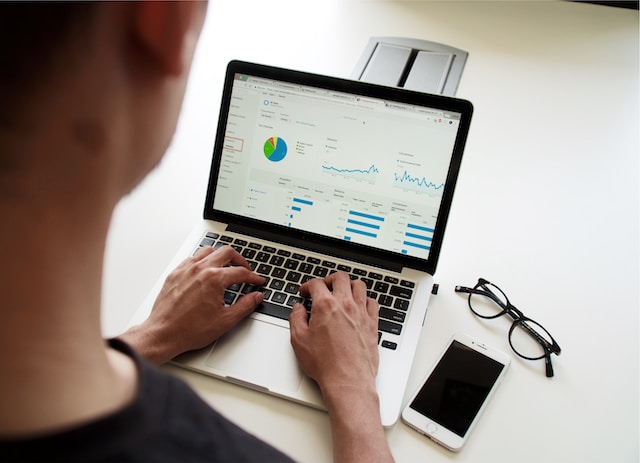Data Visualization in Journalism: Unlocking Insights for Impact
In the world of journalism, data visualization has become an essential tool for telling compelling stories and presenting complex information in a clear and engaging way. As the digital age continues to shape the way we consume news, journalists are increasingly turning to data visualization techniques to help them communicate their stories effectively. In this article, we will explore the importance of data visualization in journalism, discuss the various types of visualizations used, and highlight the skills needed to excel in this field.
Data visualization is the graphical representation of data and information. It involves using visual elements such as charts, graphs, maps, and infographics to convey complex ideas and patterns. In the context of journalism, data visualization serves as a powerful storytelling tool, enabling journalists to present data-driven narratives that resonate with their audience.
Why is Data Visualization Important in Journalism?
One of the key reasons why data visualization is crucial in journalism is its ability to simplify complex information. Journalists often deal with vast amounts of data, and presenting this data in its raw form can be overwhelming for readers. Through visualizations, journalists can distill the most important insights and present them in a visually appealing manner, making the information more accessible and understandable.
Another advantage of data visualization in journalism is its ability to provide context and highlight patterns and trends. By visualizing data, journalists can uncover hidden stories and present them in a way that is both informative and engaging. Whether it’s tracking the spread of a disease, analyzing election results, or illustrating the impact of climate change, data visualization allows journalists to present data in a way that is easy to comprehend and interpret.
Types of Data Visualizations in Journalism
There are various types of data visualizations that journalists can employ, depending on the nature of the data and the story they want to tell. Some common types include:
- Charts and Graphs: Bar charts, line graphs, and pie charts are commonly used to compare and represent numerical data. These visualizations are effective in highlighting trends, patterns, and comparisons.
- Maps: Maps are powerful tools for visualizing geographical data. They can be used to show distribution, density, or change over time.
- Infographics: Infographics combine text, images, and visual elements to present data in a visually appealing and easy-to-understand format. They are often used to convey complex information or statistics.
- Interactive Visualizations: With advancements in technology, journalists can now create interactive visualizations that allow readers to explore data on their own. These visualizations enhance engagement and enable readers to delve deeper into the story.
Skills Needed for Data Visualization in Journalism
To excel in the field of data visualization in journalism, certain skills are essential. Firstly, journalists need a solid understanding of data analysis and interpretation. They should be able to identify relevant data, clean and organize it, and draw meaningful insights from it. Proficiency in tools like Excel, Tableau, or Python can greatly aid in this process.
Secondly, visual storytelling skills are crucial. Journalists should have a keen eye for design and aesthetics, as well as the ability to present data in a visually compelling manner. They should understand how to choose the right type of visualization for the data and story at hand, and know how to effectively use color, typography, and layout to enhance the visual impact.
Lastly, journalists should have a strong sense of ethics and accuracy when dealing with data. It is important to ensure that the data used is reliable and properly sourced, and that the visualizations accurately represent the data. Journalists should also be transparent about their methodology and provide context to help readers understand the limitations and potential biases of the data.
The Value of Data Visualization in Modern Journalism
Data visualization plays a vital role in modern journalism. It enables journalists to communicate complex information in a clear and engaging manner, helping readers make sense of the world around them. By mastering the art of data visualization, journalists can unlock the power of data and create impactful stories that resonate with their audience. So, whether you’re an aspiring journalist or a seasoned professional, investing in data visualization skills will undoubtedly enhance your ability to tell compelling stories in the digital age.
Key Takeaways
- Data visualization is an essential tool for effective storytelling in journalism.
- It simplifies complex information and makes it more accessible to readers.
- Visualizations provide context and highlight patterns and trends in data.
- Common types of visualizations include charts, graphs, maps, and infographics.
- Journalists need skills in data analysis, visual storytelling, and ethical data handling.
- Mastering data visualization enhances the ability to create impactful stories.
To further enhance your skills in data visualization and excel in the field of journalism, consider taking the “NYU | Modern Journalism” online course and certificate program offered by Yellowbrick. This comprehensive program, in collaboration with New York University, provides hands-on training in data visualization techniques, storytelling strategies, and ethical data practices.
By enrolling in this program, you’ll gain the knowledge and practical skills needed to thrive in the dynamic world of modern journalism. Don’t miss the opportunity to take your career to new heights with the “NYU | Modern Journalism” online course and certificate program.








